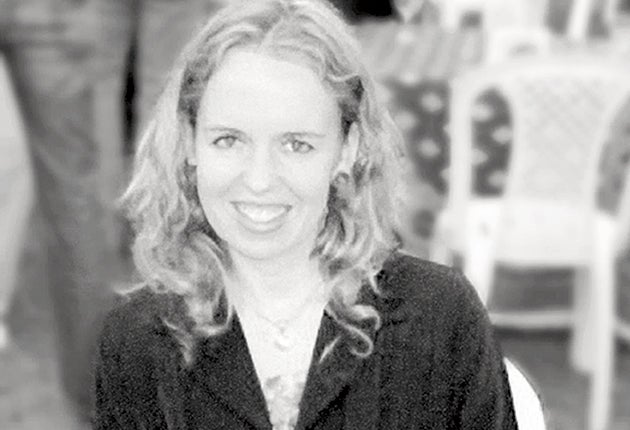Linda Norgrove coroner praises US forces

A coroner has praised the courage of the US special forces who mounted a botched mission to rescue kidnapped aid worker Linda Norgrove in Afghanistan.
Ms Norgrove, 36, was killed by a grenade thrown by a US soldier during the operation.
But Wiltshire coroner David Ridley did not blame him or his comrades for the tragic mistake.
Giving a narrative verdict at her inquest, he said the serviceman "genuinely feared for the safety of the lives of his colleagues and also himself and had to make a critical decision in a fraction of a second".
And he hailed the "bravery and courage shown by the US special forces in even attempting that rescue".
He added: "It's very easy to criticise what happened on that night from the safe confines of a court in Trowbridge, but our lives are not on the line."
Ms Norgrove, from the Western Isles, was helping the Afghan people rebuild their war-torn country when she was seized during an ambush in the Dewagal valley in Kunar province on September 26.
It heard that visibility was so poor the US troops who tried to rescue her had been unaware of her presence as they fired at insurgents and the fatal grenade was thrown.
It also heard details of how close the special forces came to achieving their goal.
Giving evidence at Wiltshire and Swindon Coroner's Court, British Brigadier Robert Nitsch, who helped investigate the incident, said a US soldier had thrown the grenade as he feared his comrades were in danger and had been "thinking at a million miles a minute at this time".
The soldier was part of a team that ventured on to the hostile mountain terrain by helicopter at night on October 8 following intelligence that she had been taken there.
The conditions were challenging, with anyone wishing to traverse the land there having to do so on foot or by pack animal, the inquest was told.
The first time Ms Norgrove was identified as being there was some eight or nine minutes into the mission, he said.
But by then it was too late, as the action took place in just 59 seconds.
First, US troops shot and killed one insurgent as they came on to a terrace near the buildings.
The team then approached along the terrace and at this point Ms Norgrove and one of her captors left one of the buildings, Ms Norgrove stumbling as she went.
This was seen on an enhanced video of the operation afterwards but at the time the troops could not see that she was there.
"Linda was wearing dark clothing, there's no visibility and she's quite slight compared to the insurgent," Brigadier Nitsch said.
Another insurgent appeared and was shot by the troops before a US soldier shot Ms Norgrove's captor, who fell down some steps.
Ms Norgrove also fell to the ground and it was around this time that the grenade was launched.
"One of the team members decides he feels significantly under threat and makes the decision to throw a grenade into the gap between the buildings," Brigadier Nitsch said.
It was this grenade that killed Ms Norgrove, he said.
In the aftermath of the disaster, false information was given that she had been killed by an Afghan insurgent, with the truth not emerging for almost two days.
This was partly because the team leader of the operation believed her captor had blown himself up, the inquest heard.
Brigadier Nitsch said: "The team leader, in a previous tour of Afghanistan, has witnessed an insurgent blowing himself up in front of him. In his mind, that is what has happened here.
"(This was) one of the contributing factors why it wasn't confirmed until later that Linda was killed by this grenade rather than by a suicide vest."
The information that a grenade had been thrown did not emerge at a debriefing after the failed mission, he said, but he assured the inquest that no-one involved attempted a cover up.
"It was a matter of deep regret to the US forces that it took 42 hours for the correct story to get out," he said.
The inquest was attended by her parents, John and Lorna, who live on Lewis in the Western Isles, younger sister, Sofie Corns, 34, and eight-month-old nephew, Tom.
In a statement released after the verdict, the family said it had confirmed what they already knew.
It said: "What we have heard today at the inquest generally confirms the account given last year at the briefing we received following the joint US/UK military investigation.
"A series of chance events all going the wrong way and an error of judgment by one of the special forces resulted in our daughter's death.
"She was a lovely girl, had so much to offer and was such a force for good in the world. We miss her terribly. The whole affair is a tragedy."
Join our commenting forum
Join thought-provoking conversations, follow other Independent readers and see their replies
Comments
Bookmark popover
Removed from bookmarks